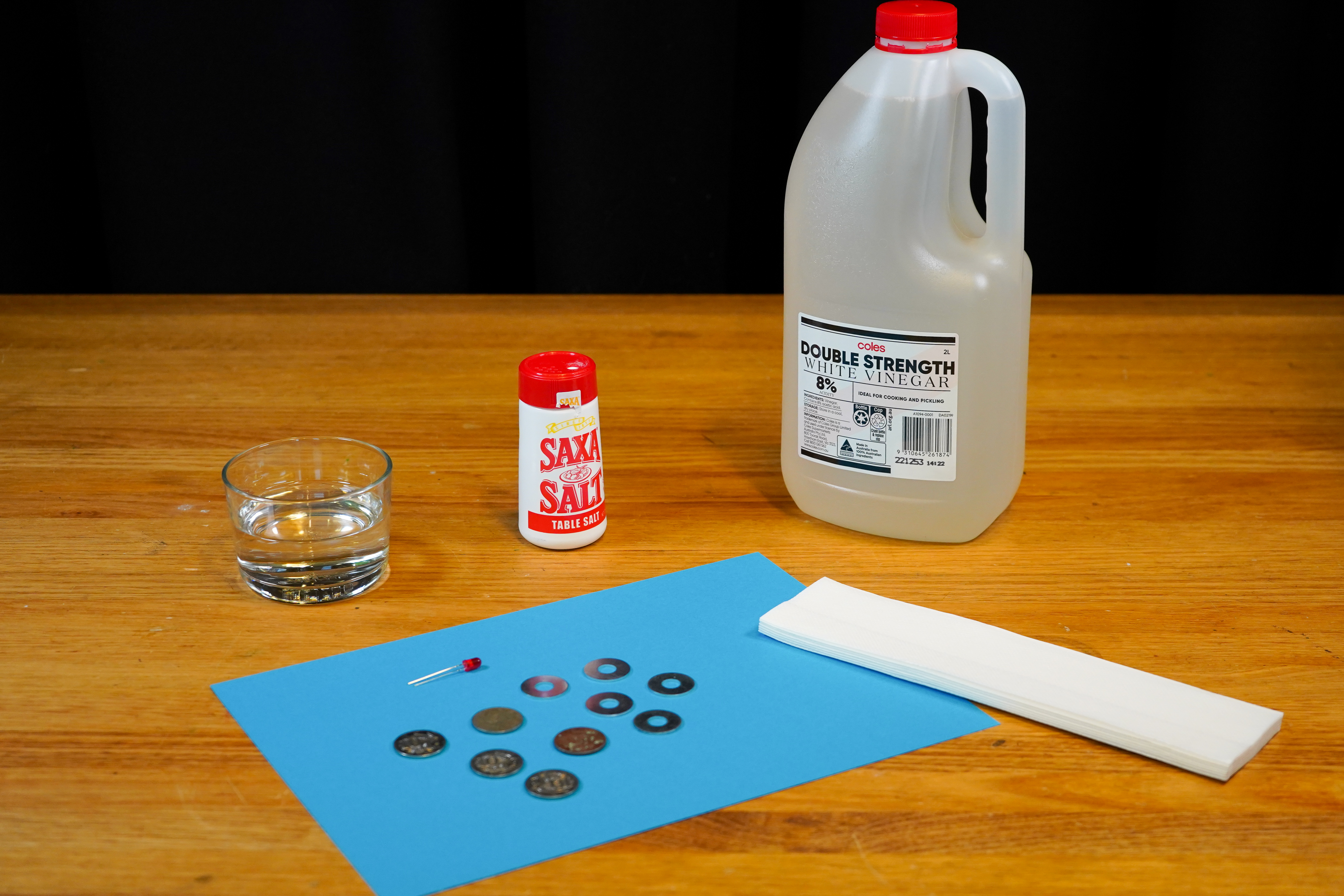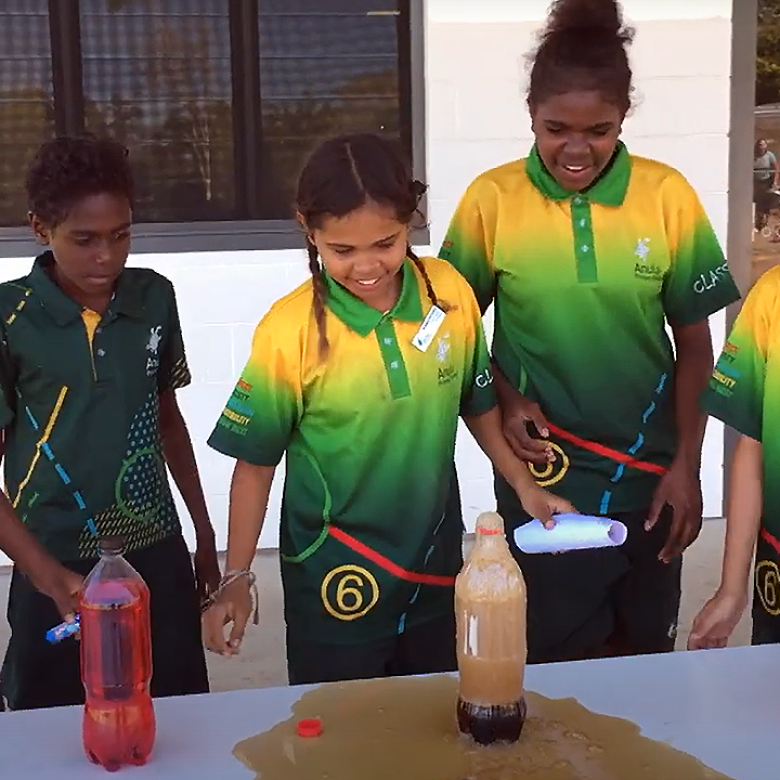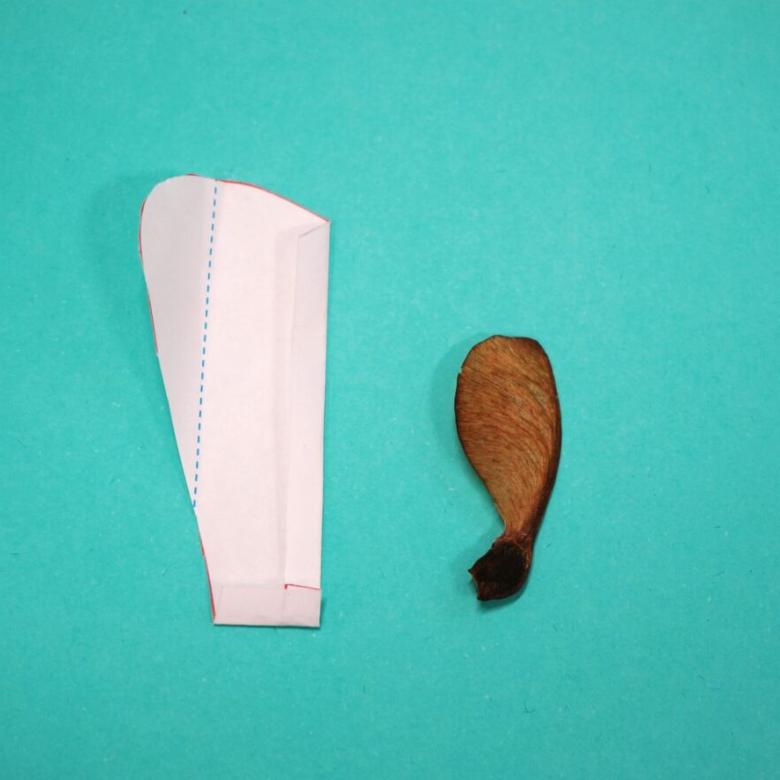You'll need
- 5 coins of the same type
- 5 zinc-plated washers about the same size as your coins
- A glass of warm water
- Some salt & a teaspoon
- Vinegar
- Thick construction paper, a pencil and scissors
- A paper towel
- A light emitting diode (LED) – the type with two stiff wire ‘legs’

What to do
- Use the coins as a template to draw 5 circles on the construction paper and cut them out with the scissors.
- Add 1 to 2 teaspoons of salt and a splash of vinegar to the warm water. Stir until no more salt will dissolve.
- Soak the paper circles in the water for about 15 minutes.
- Remove the paper circles from the water and dab them with the paper towel so they don’t drip.
- Stack the 5 coins, 5 paper circles and 5 washers in this order: coin, paper, washer, coin, paper, washer etc.
- Check to see which ‘leg’ on the LED is longer. Press this long leg against the coin at the bottom of the stack. Press the shorter leg to the washer at the top of the stack. You might need to bend the legs a bit to get them to connect!
- Congratulations! You’ve just made a battery!

Questions to ask
What happens if you use fewer coins, paper circles and washers in the stack?
What happens if you used more coins, paper circles and washers in the stack?
What happens if you changed what order the coins, paper circles and washers are stacked in?
What coins work best? Try a few different types.
What's happening
Connecting the coin at the bottom of the stack to the washer at the top creates an electric circuit! Electrons flow out of zinc washer at the top, through the LED, and into the copper in the coin at the bottom. This is an electric current. The LED turns some of the energy in the electric current into light.
The coins and washers create two different chemical reactions with the salty, vinegar-y water. Zinc from the washer reacts with the water to release electrons. Whilst the reaction at the coin ‘uses up’ electrons. When both are connected using the LED, electrons are pushed away from the zinc and pulled towards the copper. This push/pull makes the electrons flow through the wire, lighting up the LED. This is the same principle behind the batteries we use every day!
The stacked coins, paper circles and washers are very similar to one of the first electric batteries ever created; a voltaic pile. Batteries have three parts: A cathode (the coins), an anode (the zinc washers), and an electrolyte (the salty, vinegar-y water). The job of the anode is to ‘give up’ or release electrons. The zinc in the washers is a good material for anodes. The job of the cathode is to ‘take in’ or accept electrons. Australian coins contain copper, which is a good material for cathodes.
The movement of electrons between the coins and washers creates an electrical imbalance – or voltage. A single layer of coin, washer and electrolyte-soaked paper circles only creates a small voltage – not enough to power the LED. We must connect multiple stacks together! This happens with regular batteries also – many devices at home may take 2 or more batteries. Together they provide enough energy to power the device.






